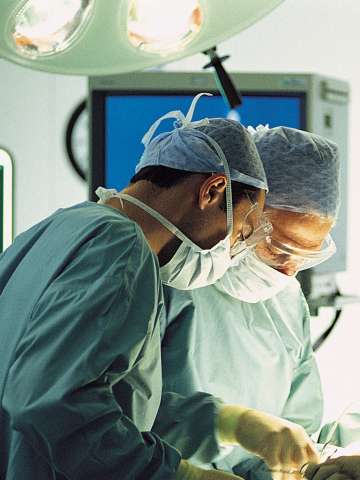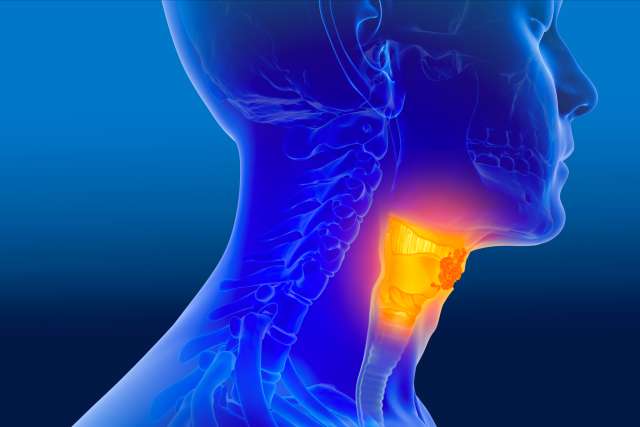Head and Neck Cancer
We’re one of the nation’s most active centers for the treatment of head and neck cancer treatment. Our world-renowned specialists conduct 50,000 patient visits each year, giving us a remarkable depth of expertise.

Why choose UCLA Health for head and neck cancer care?
With more than 50,000 patient visits each year, the UCLA Health Head and Neck Cancer Program is one of the nation’s most experienced head and neck cancer centers. Our specialists provide comprehensive, individualized care in a supportive, compassionate environment. We offer:
Expertise in head and neck cancers: Our highly accomplished experts specialize in diagnosing, staging and treating all types of head and neck cancers, both common and rare.
Compassionate, collaborative care: We partner with you to make care decisions. We give you all the information you need to weigh your care options.
Access to innovative research: Because we are an academic medical center, our patients can take part in the latest clinical trials for new treatments.
Convenient locations: You’ll find head and neck cancer services in multiple locations across the greater Los Angeles region. At UCLA Health’s community cancer care centers, you receive the highest quality care, close to home.
Our services
From a head and neck cancer diagnosis to post-cancer care, UCLA Health’s Head and Neck Cancer Program offers comprehensive services, such as:
Head and neck cancer diagnosis
UCLA Medical Center ranks among the world’s top 20 technologically advanced hospitals, with access to state-of-the-art technology for cancer diagnostics. Depending on your symptoms, our specialists may order one or more of the following diagnostic or imaging tests:
Advanced molecular markers: Diagnostic tests that can give doctors important information about cancer diagnosis and treatment. For example, an HPV/p16 saliva test for throat cancer can help predict a patient’s response to certain treatments .
CT scan: A test that uses computerized X-rays to take pictures of the affected area. CT scans create detailed images that are useful in diagnosing cancer.
3.0 Tesla (3T) MRI: The fastest MRI technology available. 3T MRI provides better imaging than traditional MRI, and the machine’s larger opening is more comfortable for patients.
Positron emission tomography (PET) scan: A nuclear medicine scan that uses contrast dye to help detect cancer and understand how a tumor behaves.
Distal-chip endoscopy: A test that allows doctors to see inside the body using a thin tube with a light and tiny camera at the end. The scope uses a digital chip instead of fiber optics (light) to transmit images of structures and tumors inside the head and neck. The digital chip produces higher-quality images that help diagnose and stage cancer.
Fine needle aspiration biopsy: A test performed with a thin needle guided by CT, MRI or ultrasound imaging. This technique is less invasive than a typical biopsy.
Cancer support
Head and neck cancers can cause secondary problems, such as swallowing difficulties. At UCLA Health, we support you every step of the way by offering:
Swallow preservation program: A unique service that helps radiation therapy patients maintain as much swallow function as possible.
Head and neck cancer survivorship program: A comprehensive follow-up program for cancer survivors, designed to help patients live a full life.
Mind and body healing program: A program that offers customized integrative medicine including mindfulness, guided imagery, meditation and medical hypnosis.
Head and neck cancers we treat
At UCLA Health, we treat all types of head and neck cancers, including:
Throat cancers: Cancer that occurs anywhere in the throat, such as:
- Hypopharyngeal and laryngeal cancer: A rare tumor that grows in or beside the voice box (larynx).
- Nasopharyngeal cancer: A rare cancer that starts in the throat behind the nose.
- Oropharyngeal and oral cancer: A type of cancer that begins in the mouth and can extend into the tonsils and middle of the throat.
Paranasal sinus and nasal cancer: A type of cancer that grows in the openings around, in or near the nose.
Salivary gland cancer: A cancer that occurs under the tongue and jawbone where the salivary glands are located.
Thyroid cancer: A highly treatable cancer that begins in the thyroid, a hormone-producing gland located at the bottom of the neck.
Treatments we offer
Specialists in this program perform the most advanced treatments of head and neck cancer, including:
Radiation therapy for head and neck cancer
Our experienced radiation oncologists use the latest precision radiation therapy technologies to help spare healthy tissues and reduce side effects. These technologies include:
3D conformal therapy: A technique that matches radiation to a tumor’s shape to more precisely target cancer while sparing surrounding tissues.
Intensity modulated radiation therapy (IMRT): An external beam radiation technique that precisely targets cancerous tumors and tissues.
Stereotactic body radiotherapy (SBRT): A therapy that uses several beams of high-dose radiation to target a tumor more precisely from various angles.
Image-guided radiation therapy (IGRT): A type of radiation therapy that uses imaging to target tumors more precisely.
High-dose rate (HDR) brachytherapy: A procedure that places high-dose radioactive pellets, known as seeds, in or near a tumor.
Head and neck cancer surgery
Our surgeons perform the most advanced surgery for all types of head and neck cancers, including:
Minimally invasive surgery: A surgical technique that uses small incisions, causing less pain and scarring than traditional surgery. Patients require less recovery time in the hospital and experience fewer postsurgical complications. Minimally invasive surgical options available at UCLA Health include:
- Transoral robotic surgery (TORS): A technique used to remove cancers of the mouth, throat (pharynx) and voice box (larynx) .
- Transoral laser microsurgery (TLM): A technique that uses a laser to separate and remove cancerous cells from healthy tissue.
Microvascular and reconstructive surgery: Surgery to restore facial appearance and preserve speech, swallowing and chewing function. Surgeons transplant tissue from another part of the body to the affected part of the head and neck. This type of procedure is called a graft. Reconstructive procedures we offer include:
- Jawbone reconstruction: Surgery to restore facial structure and oral function lost by head and neck cancer surgery. Surgeons use bone grafts and dental implants to reconstruct a jaw so patients can chew again.
- Tongue reconstruction: Surgery for people who lost part or all of their tongue during cancer surgery. Using skin or tissue taken from another area of the body, known as free flaps, our surgeons can reconstruct part of the tongue to partially restore swallowing and speech capabilities.
- Facial reanimation reconstructive surgery: A surgery to restore movement in the facial muscles of patients with tumors of the salivary glands, cheek or ear. By transferring muscle and grafting nerves onto the affected area, our surgeons can help patients recover facial movement.
Meet our team
Our expert head and neck cancer surgeons work together with doctors from other specialties to deliver personalized, quality care.
Contact us
Call 310-267-7076 to request an appointment with a head and neck cancer specialist at UCLA Health.
Find your care
Our Head and Neck Cancer Program helps you start on the road to recovery. For more information, connect with a cancer care specialist at 310-267-7076.
